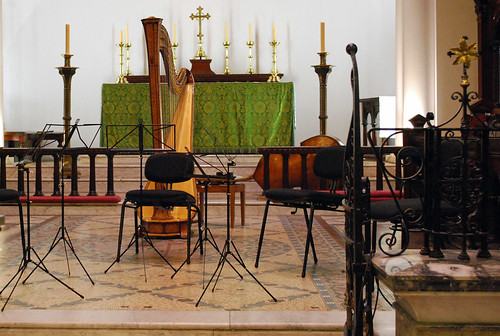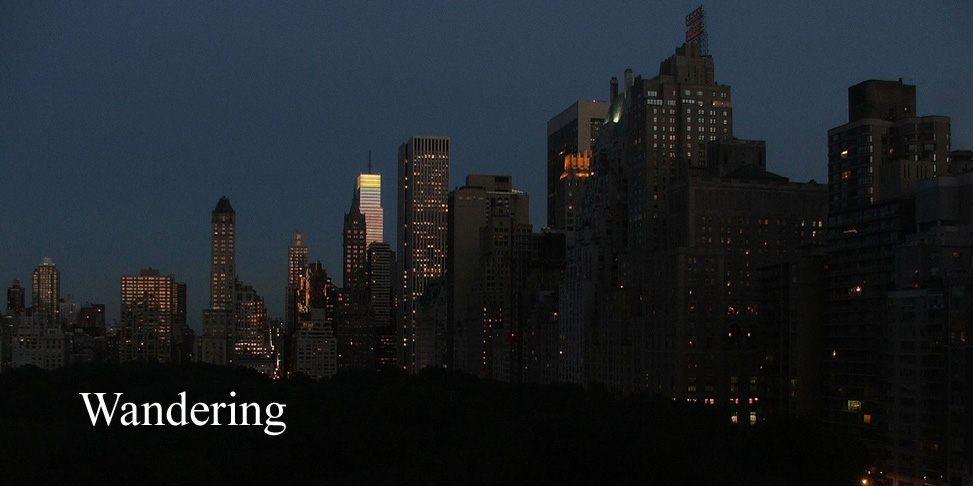
The Sydney Symphony fellowship program provides opportunities for aspiring orchestral players to be part of the orchestra, and take part in performances and further education designed to assist them in their careers. It's part of what I recently heard described as the "academisation" of the beginnings of a career in music. There have been great changes.
Charles Mackerras was appointed second oboe of then ABC Sydney Orchestra at the age of 17, and by 19 was principal. Earlier, Neville Amadio joined the 2FC Broadcasting Orchestra at 15, and was principal flute of the ABC Orchestra by the time he was 21.
More recently, it was not uncommon for conservatorium graduates to obtain orchestral positions on graduation. Now it is much more competitive.
This year, David Papp, who was a member of the fellowship program in 2008, became the orchestra's youngest member, at the age of 24, when he was appointed second oboe.
Each year the fellows give chamber music concerts at St. James King Street; and I heard one of the best so far on 2 September.
There are all kinds of pitfalls in writing about concerts. The Daily Telegraph reports that the pianist and musical critic David Money, who died on July 17 aged 97, " liked to include positive remarks, but occasionally he was reduced to referring to 'a well-balanced program'."
When I read this, I was about to write enthusiastically about the program at this concert, which was very well balanced, and very well performed at well.
The first item was Mozart's Horn Quintet K407, scored for two violas, violin, cello and horn. As the excellent program note says, the scoring for two violas lends a warmer sound which complements the sound of the horn. The horn part, which is really like the solo in a concerto, was beautifully played by Alex Love. The fellowship string players were joined by Roger Benedict, SSO principal viola and artistic director of the fellowship program.
Next came Debussy's Sonata for flute, viola and harp. There is not, as yet, a harp player among the fellows, so the ensemble was joined by the fine player Owen Torr, for the this and the next item. As part declaration of interest and part excuse to wander, I should mention that a few years ago Mr. Torr, was my daughter's harp teacher.
This all began in the tropical warmth of the Sunday market at Port Douglas where we heard the delightful playing of a young man with a small harp. We asked where the harp had been made.
In due course I travelled to the Atherton tableland where I found the maker, surrounded by harps of various sizes in the course of manufacture. He was from the United States and had, I think, found American society uncongenial and exiled himself to the wilderness outside Mareeba. As well as the harps, he had a large aviary full of cockatiels. For those with the skills to do it, working with wood must be a very satisfying occupation, particularly when making something as attractive as the harp.
We soon learned that, attractive as they were, these harps were not concert harps, but ours was still fine for a beginner to use for practice.
Although I hadn't played it recently, I have a old vinyl LP including Debussy's Sonata played by William Schegler, Flute, Fritz Ruff, Viola and Helga Storck, Harp. I found that the piece, or parts of it at least, were recorded in my mind as a result.
I thought fellowship flautist, Lina Andonovska, played with great subtlety and variation. The first movement, Pastorale, seems to echo some of the cadences of Debussy's preludes while evoking the atmosphere of the jungle as depicted by his contemporary Heni Rousseu. Did Debussy have the tropical warmth of the Snake Charmer in mind, I wonder. Ms. Androvska played this with a marvellous smoky, lugubrious tone which was exactly right.
The mood changes in the second movement, Interlude, which does in fact provide an interlude between the more distinctive outer movements, giving Ms. Andononvska the opportunity to play with a brighter timbre.
The Finale is a reminder that we are in the musical world of the early twentieth century, with an edgy dialogue between the flute and viola, well played by Charlotte Burbrook de Vere.
Next we heard the Elegiac Trio of Arnold Bax, written for the same instruments at about the same time. Bax was about 20 years younger than Debussy, but his Trio lacks the modernist feeling of Debussy's Sonata. It was most interesting to be able to hear the two works together in the same program.
I heard the Trio as recently as 6 August at the Australian Festival of Chamber Music in Townsville, in the distinctly less elegiac setting of Jupiters Casino Ballroom. It wouldn't often have been played by finer musicians: Lorna McGhee (flute), David Harding (viola) and Sebastien Lipmann (harp), but I found, hearing it again, that the piece itself had made little impression, unlike the Debussy I recalled from a recording heard years ago.
The concert ended with a performance of the sextet from Capriccio by Richard Strauss. The sextet is so full of associations for those who have heard and loved the opera that it's difficult to talk about in isolation. It is similar to Debussy's Sonata, having contrasting passages of calm and agitation; the agitation in this case reflecting the anxious mood of the competing artists of the opera. The excellent acoustic of the church suited the string playing very well.
Perfectly balanced.
*****
For my notes on an earlier Fellowship concert:
http://wandering-ninox.blogspot.com/2007/09/st-james-church-sydney-symphony.html





No comments:
Post a Comment